South American dragons have the English name Iguana, but people still call them green iguanas. The reason is because this dragon is often green when young. With its strange beauty and pure nature, South American dragons are increasingly loved and nurtured by many people.
Also due to their popularity, in recent years, breeders around the world have bred many South American dragon breeds with new and unique colors. Let’s admire these beautiful “colors”!
Green Iguana (Green Iguana)
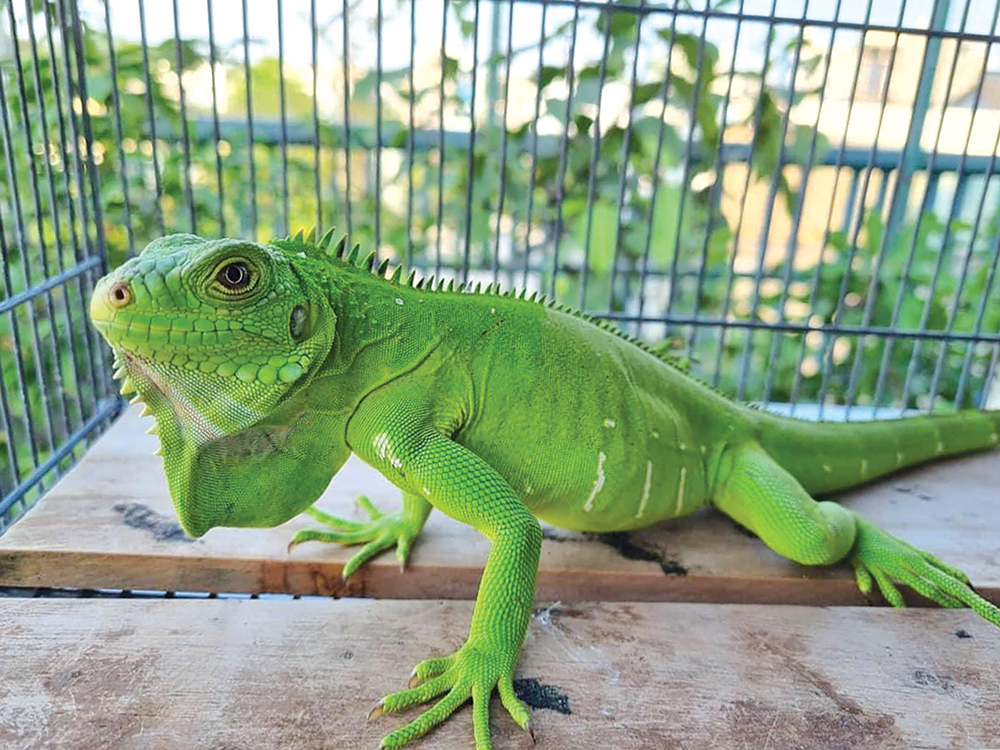
The green dragon of South America is the original lineage of this reptile. They have good health, beautiful shape, are easy to access, easy to care for and feed, and the price is very reasonable.
When young, the Green Iguana has a characteristic green color, which helps them easily hide in leaves to avoid predators. The blue color will gradually turn gray with black stripes as the dragon matures. In addition, during the breeding season, males can turn a beautiful orange color.
Red Iguana (Red Iguana)

Red is also a basic color of South American dragons. This dragon breed is loved by many people because its entire body will turn bright red when it reaches adult size. However, when they are young, they still have a characteristic green color, especially on the belly, mixed with dark brown stripes.
During the process of growing and shedding the skin many times, the green color will gradually disappear, replaced by a dark red color that stands out, especially during the mating season.
Red Hypo Iguana (Red Hypo Iguana)

The same color is red, but the red hippodragon of South America is more special in that the melanin pigments in the body are significantly reduced. Therefore, compared to the Red Iguana, the red color of the Hypo Red Iguana is brighter and leans towards an extremely impressive orange tone.
This is an artificial mutant line carrying the recessive hypomelanistic gene. Breeding this type requires a lot of time and effort. In addition, because they have beautiful colors, their prices are also very high.
Blue iguana
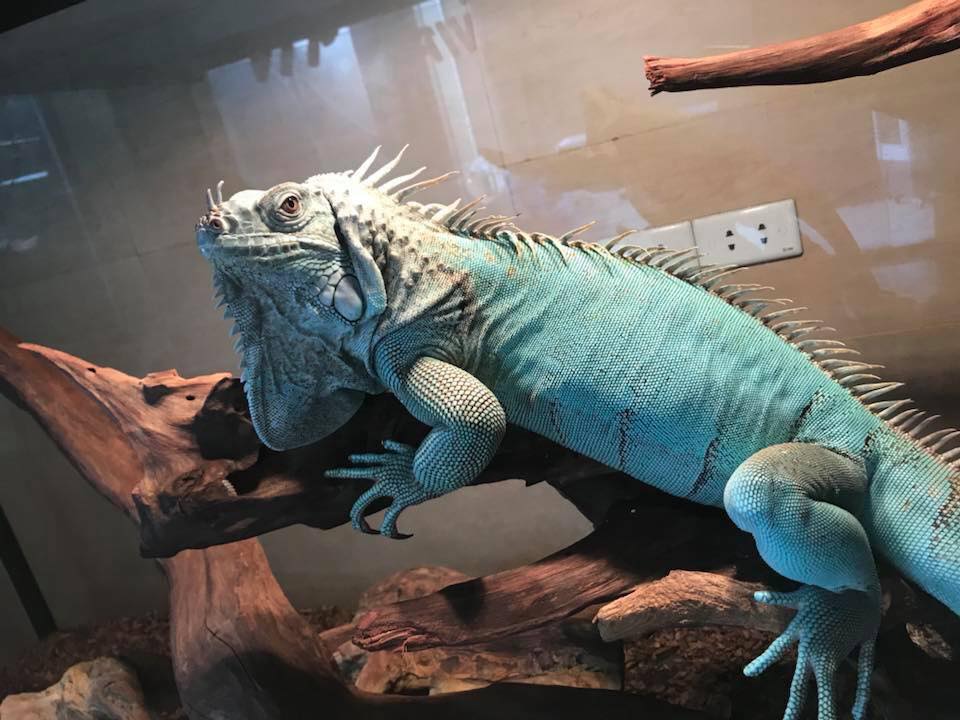
The South American blue dragon is an artificial mutant product. They carry recessive genes that cause changes in body color. Breeders apply crossbreeding methods that cause the yellow pigment on the body of the South American green dragon to disappear.
Baby dragons will have a blue color covering most of their body. Because of its unique and beautiful color, the Blue Iguana is sought after by many beautiful South American dragon “players” despite its high price.
Albino Iguana (Albino Iguana)
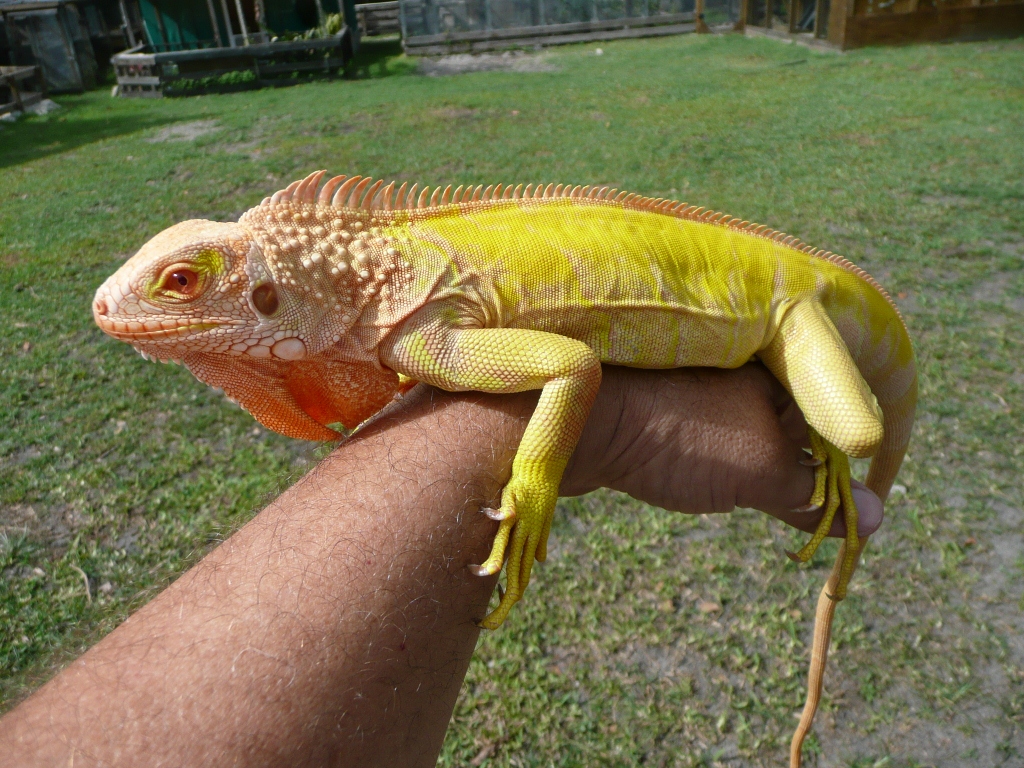
Unlike the Blue Iguana, the Albino Iguana is a naturally mutated dragon line. Instead of the usual green color like many other dragons, the South American albino dragon has a beautiful bright yellow color. Their eyes are also more orange, even redder than usual.
In the Albino Iguana, the loss of most of the color pigments in the body causes their vision to be very poor. This means they are vulnerable to danger and difficult to survive in the wild. However, due to its beautiful color, the price of a South American albino dragon is far from cheap.
Snow Iguana (Snow Iguana – Blizzard)
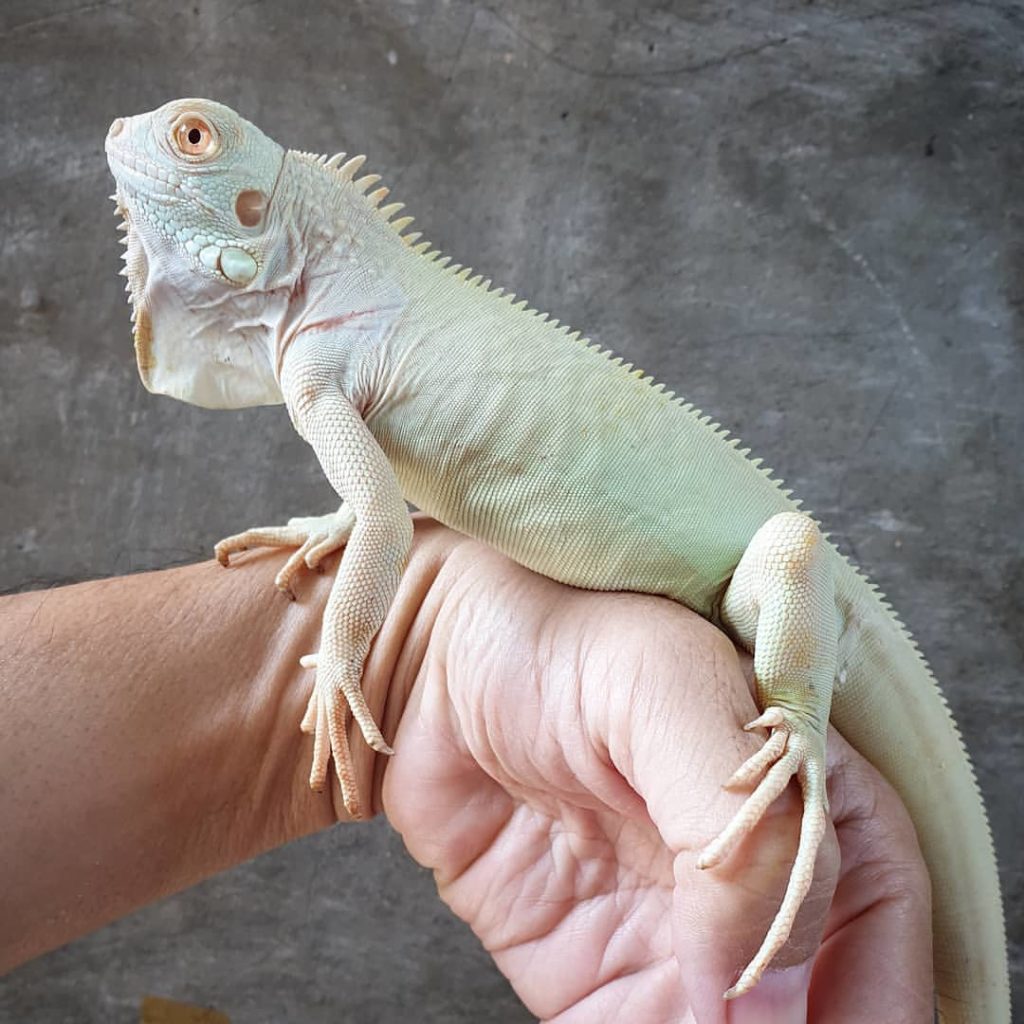
At the top of the list of rare and beautiful South American dragons is the Snow Iguana, also known as the Blizzard Iguana. They have a snow white color and extremely attractive pink eyes.
This is the product of special breeding and takes a lot of time, because the probability of success is extremely small. For this reason, they belong to high-end products and have very high prices in the market today.
Rhino Iguana (Rhino Iguana)
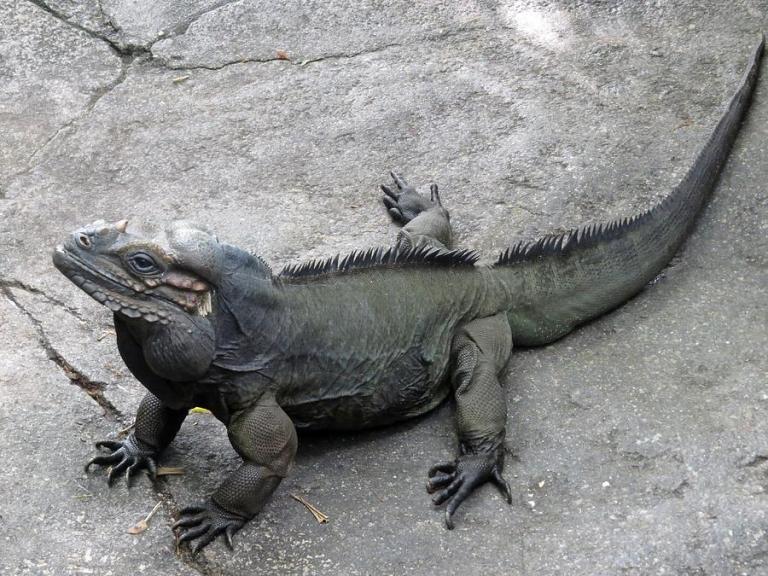
The basic South American dragon breeds differ only in color and are completely identical in shape and care. But with the endemic South American dragon lines, there will be huge differences in appearance. Rhinoceros iguanas are just one example.
They are endemic dragons of South America that live on the island of Hispaniola in the Caribbean, in the territories of the Republic of Haiti and the Dominican Republic. The appearance of the Rhino Iguana is quite impressive, with a length of about 1m – 1m3, gray skin color and especially with many small horns on the nose that look very similar to a rhinoceros.
Cuban rock iguana
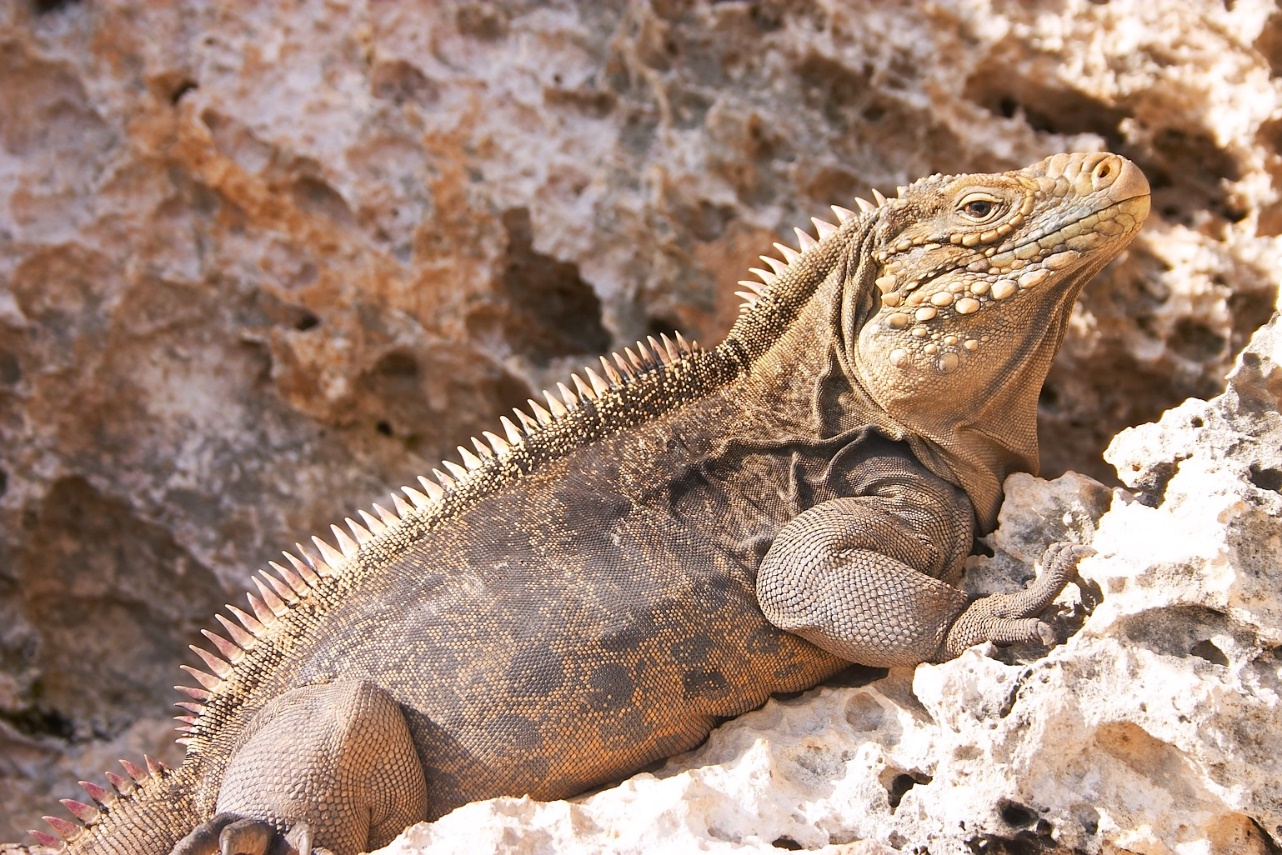
This is a beautiful dragon that lives on the coastal rocks on the island of Cuba and the surrounding small islands. Rock iguanas are quite large in size, they can be up to 1 m5 long and weigh about 7 kg.
The Cuban rock iguana is gray-brown in color with black stripes on its body. They possess a row of spines running from the head to most of the tail, an elongated head, a large bump with many spines on the face. In particular, stone iguanas have beautiful red eyes.
Spiny-tailed iguana
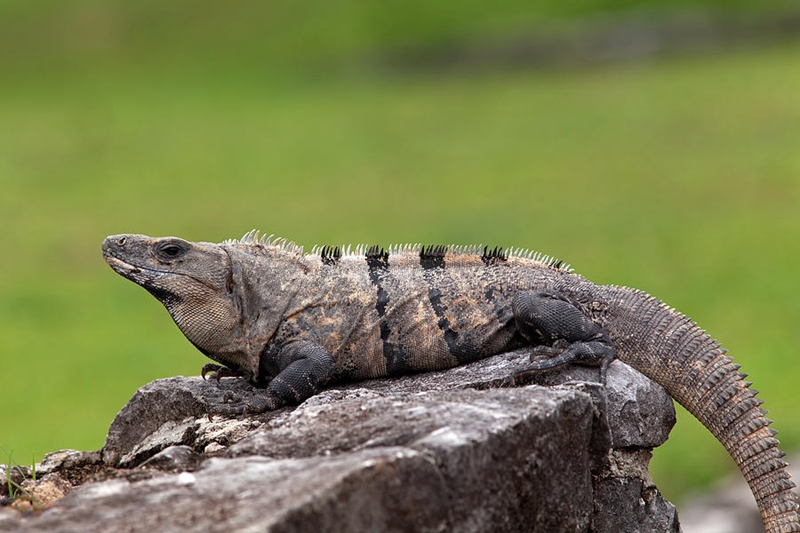
The Spiny Tailed is an endemic South American dragon that lives in Mexico, from central Sinaloa to southern Chiapas. They are more modest in size than other lines. Adult males are about 1 m3 long, females are about 1 m with a fairly long lifespan of 15 – 25 years.
The distinguishing feature of the spiny-tailed iguana is not its tail, spines or humps, but its tapered tail with many spines. They have small heads, elongated bodies and are extremely agile. You must bear in mind that this is a rather wild South American dragon, difficult to tame unless it has been raised from a young age.
Tobago Iguana (Tobago Iguana)
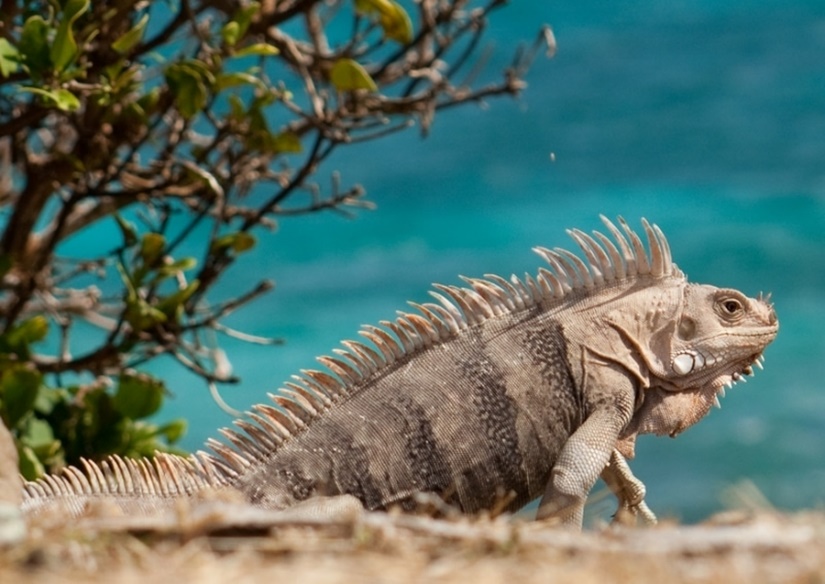
This dragon breed has many other names such as Zebra, White Rhino. This is a species of dragon belonging to the Green Iguana family, but distributed in the Republic of Trinidad and Tobago, a country located in the southern Caribbean Sea.
The Tobago Iguana looks almost the same as the common Green Iguana, but its face is longer, it has many small horns on its nose and tall, erect spines. When they are young they have a typical green color, but when they mature they will be a very impressive gray color with black stripes.
10 species of South American dragons with 10 different colors, really interesting for those who want to have an Iguana as a pet. Learn about the care process and how to grow them if you love this ornamental reptile.





